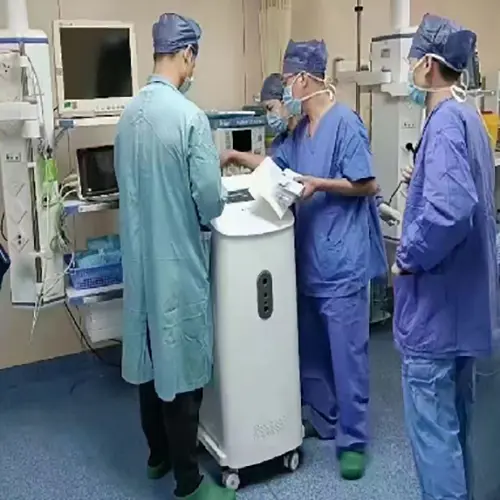Anesthesia Machine Equipment Disinfection: Ensuring Patient Safety
Introduction:
In the medical field, ensuring patient safety is paramount. Anesthesia machine equipment plays a crucial role in surgical procedures, and proper disinfection protocols are essential to prevent the transmission of harmful pathogens. Effective disinfection of anesthesia machine equipment helps minimize the risk of healthcare-associated infections (HAIs) and protects both patients and healthcare providers. In this article, we delve into the importance of anesthesia machine equipment disinfection, the disinfection process, and recommended best practices.
The Significance of Anesthesia Machine Equipment Disinfection:
Anesthesia machine equipment comes into direct contact with patients during procedures, making it a potential source of contamination. Failure to maintain appropriate disinfection protocols may lead to the transmission of bacteria, viruses, and other microorganisms. Effective disinfection not only mitigates the risk of HAIs but also safeguards the health and well-being of patients.
The Disinfection Process:
Pre-Disinfection Preparations:
Before beginning the disinfection process, it is crucial to ensure the machine and accessory surfaces are free of visible debris. This involves removing any visible organic material, such as blood or bodily fluids, through appropriate cleaning measures using mild detergent solutions and lint-free, non-abrasive cloths.
Selecting Disinfectants:
Choosing the appropriate disinfectant is vital to effectively eliminate microorganisms while being safe for the equipment and its components. Anesthesia machine manufacturers often provide guidance on compatible disinfectants and their appropriate usage. Ethanol-based solutions, hydrogen peroxide, or quaternary ammonium compounds are commonly used disinfectants that have been proven effective against a wide range of pathogens.
Disinfection Process Steps:
a. Disassemble and Clean: Disassemble reusable components of the anesthesia machine, such as breathing circuits, face masks, and reservoir bags, following manufacturer guidelines. Clean each component using an appropriate cleaning solution and rinse thoroughly.
b. Apply Disinfectant: Apply the selected disinfectant solution to all surfaces and equipment parts that come into contact with patients. Pay close attention to high-touch areas, such as breathing system connectors, ventilator knobs, and control panels. Ensure that all surfaces remain visibly wet with the disinfectant for the recommended contact time specified by the manufacturer.
c. Rinse and Dry: After the appropriate contact time, thoroughly rinse all disinfected surfaces with sterile or filtered water to remove any residual disinfectant. Allow components to air dry in a designated area that is clean and free from potential contaminants.
d. Reassemble and Verify: Reassemble the anesthesia machine equipment, ensuring that all components are securely fastened and in proper working order. Perform operational checks to validate their functionality and readiness for use.
Best Practices for Anesthesia Machine Equipment Disinfection:
Adhere to Manufacturer Guidelines: Follow the manufacturer's instructions regarding disinfection protocols, including the disinfectant solution, contact time, and compatibility with equipment materials.
Regular and Consistent Disinfection: Establish a regular disinfection schedule that aligns with the frequency of equipment usage. Consistency is key in maintaining a clean and hygienic environment.
Training and Education: Healthcare providers should receive comprehensive training and education on proper disinfection techniques, ensuring adherence to standardized protocols and guidelines. This includes understanding the importance of hand hygiene before and after disinfection procedures.
Environmental Considerations: Create a dedicated area for equipment disinfection that is well-ventilated and separate from patient care areas. Properly store and handle disinfectants per their safety guidelines to ensure the well-being of healthcare providers and minimize environmental impact.
Documentation and Auditing: Maintain accurate records of disinfection activities, including dates, times, products used, and personnel responsible. Regular auditing and monitoring can help identify any issues or gaps in the disinfection process, allowing for timely corrective actions.
Conclusion:
Anesthesia machine equipment disinfection is an essential aspect of patient safety in healthcare settings. It helps prevent the transmission of pathogens and reduce the risk of HAIs. By following appropriate disinfection protocols, adhering to manufacturer guidelines, and implementing best practices, healthcare providers can ensure the cleanliness and integrity of anesthesia equipment. Comprehensive training, regular auditing, and consistent adherence to disinfection procedures contribute to maintaining a hygienic environment and safeguarding the health and well-being of patients and healthcare providers alike.
